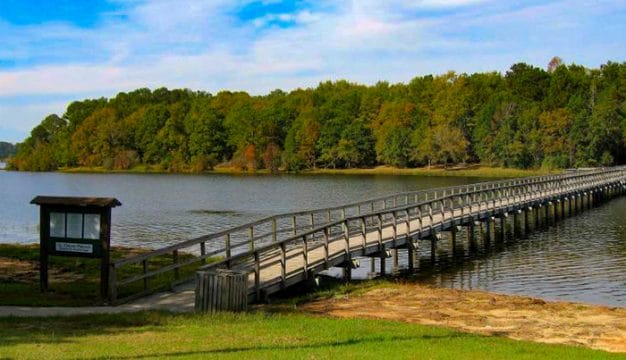Kinston
Kinston is located in the southwestern corner of in Coffee County southeastern Alabama. It has a mayor/city council form of government.
History
 Geneva State Forest
Located at the intersection of the of the Samson–Opp and Elba–Florala highways, Kinston was named Cross Trails when it was established in 1878. Though people had been farming in the area since the 1830s, little development or population growth occurred in the town until a sawmill and turpentine still opened in 1899. The local economy boomed when the Louisville & Nashville Railway built the Alabama-Florida branch through the town around 1900. That year, Cross Trails was renamed Boone in honor of local landowner Pink Hickman’s wife, whose maiden name was Boone. The town was next rechristened Pink to honor Hickman, who had donated the land for a train depot in the area and to avoid confusion with similarly named towns in the state. In 1910, a Mr. Pride bought property in the area and because of a similarity between Pink and nearby Pinckard, Dale County, Pride requested that the name of the town be changed to that of his hometown of Kinston, North Carolina. On September 27, 1912, the town’s name was changed to Kinston.
Geneva State Forest
Located at the intersection of the of the Samson–Opp and Elba–Florala highways, Kinston was named Cross Trails when it was established in 1878. Though people had been farming in the area since the 1830s, little development or population growth occurred in the town until a sawmill and turpentine still opened in 1899. The local economy boomed when the Louisville & Nashville Railway built the Alabama-Florida branch through the town around 1900. That year, Cross Trails was renamed Boone in honor of local landowner Pink Hickman’s wife, whose maiden name was Boone. The town was next rechristened Pink to honor Hickman, who had donated the land for a train depot in the area and to avoid confusion with similarly named towns in the state. In 1910, a Mr. Pride bought property in the area and because of a similarity between Pink and nearby Pinckard, Dale County, Pride requested that the name of the town be changed to that of his hometown of Kinston, North Carolina. On September 27, 1912, the town’s name was changed to Kinston.
In 1914, the town’s first bank—the Farmers and Merchants Bank—was established. By 1920, Kinston also claimed a theater, a kiln, a planer mill, and two cotton gins. Kinston incorporated in 1920 and a new 11-room school was built in 1926 and accredited three years later. The town’s progress was essentially halted by two events: a fire downtown in 1928 that destroyed many businesses and the closing of the local bank during the Great Depression. Local businesses were unable to secure loans to rebuild, and most of the area businesses were forced to shutter their doors as well. Telephone service came to the city in 1952. The following year, a garment factory opened, employing 200 people, and in 1966 Monsanto opened a facility; both later closed. A new bank also opened in 1966.
Demographics
According to 2020 Census estimates, Kinston recorded a population of 784. Of that number, 95.4 percent of respondents identified themselves as white, 2.7 as Hispanic or Latino, 2.0 percent as American Indian, 2.0 percent as two or more races, and 0.5 percent as African American. The town’s median household income was $37,500, and the per capita income was $15,854.
Employment
According to 2020 Census estimates, the workforce in Kinston was divided among the following industrial categories:
- Manufacturing (19.5 percent)
- Agriculture, forestry, fishing and hunting, and extractive (17.6 percent)
- Transportation and warehousing and utilities (17.2 percent)
- Educational services, and health care and social assistance (12.3 percent)
- Construction (8.4 percent)
- Finance, insurance, and real estate, rental, and leasing (6.5 percent)
- Professional, scientific, management, and administrative and waste management services (5.7 percent)
- Retail trade (3.1 percent)
- Public administration (2.7 percent)
- Wholesale trade (2.7 percent)
- Other services, except public administration (2.3 percent)
- Arts, entertainment, recreation, and accommodation and food services (1.9 percent)
Education
Kinston School is part of the Coffee County school system; it has one K-12 school.
Transportation
State Highway 52 runs through Kinston going northwest-southeast, and State Highway 189 runs through town east-west. U.S. Highway 331 is located west of town about six miles, running north-south.
Events and Places of Interest
Geneva State Forest lies less than a mile south of Kinston.
Additional Resources
Watson, Fred S. Coffee Grounds: A History of Coffee County, Alabama, 1841-1970. Anniston, Ala.: Higginbotham, Inc., 1970.
Coffee County Heritage Book Committee. The Heritage of Coffee County, Alabama. Clanton, Ala.: Heritage Publishing Consultants, 2002.



